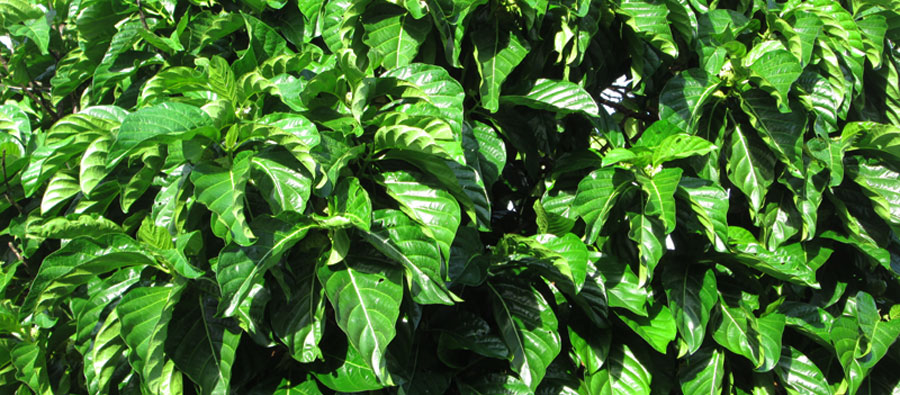Click below to see our plants alphabetically listed by common name with their cures and cooking ideas
|
A B C D E F G H I J K L M N O P Q R S T U V W X Y Z
Click for a list of my Special Pages
|
|
Search for Latin names and more here!
|
|
|
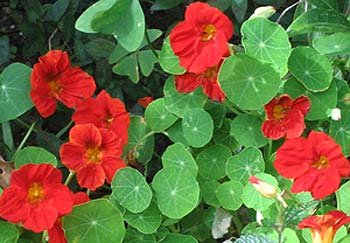
|
| |
| Nardo
Ginger Lily See
the "G" Page -- GINGERS -- Yellow Butterfly Ginger |
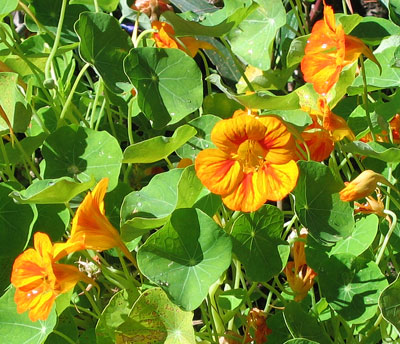  Nasturtium Tropaeolum
majus syn. Tropaeolum nanum Nasturtium Tropaeolum
majus syn. Tropaeolum nanum
This is one of my all time favorite flowering plants
and its success in my garden has eluded me for years. Does
it need water or not, fertile soil or not, sun or not?
I am too frustrated for words by this engaging plant which
I have been unable to grow.
Benefits:
Nasturtium flowers, leaves and seeds are all edible
and all impart a peppery flavor to the foods in which they
are used. The plant's flowers are attractive
to butterflies and hummingbirds. Nasturtiums are high in vitamin
C and have had medicinal uses in traditional medicine.
From: Middle S. America
Photographed: At
the Hotel Atitlan on Lake Atitlan in Guatemala in 2010.
Planting and Care: In my last foray onto the internet
in search of yet another way to get this plant growing I found
the latest information. Plant them in full sun in an area of the
garden that holds moisture in the soil. I'm going to give that
a try.
Text and Photographs ©KO
2004/2010 and ©GreenGardeningCookingCuring.com 2013/2018
|
Natural
Pesticides and More
See
the "L" Page -- LINKS and REFERENCES FOR TROPICAL
GARDENING |
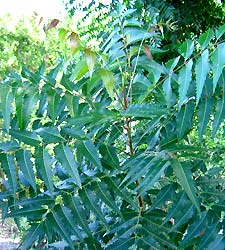 **Neem
Tree, Nimtree, Indian Lilac Azadirachta indica **Neem
Tree, Nimtree, Indian Lilac Azadirachta indica
This is a lovely tree with deep green soft leaves as you can see in the photograph
to the left. It seems a very pliant tree with soft branches growing hither and
yon which makes it ideal in the Caribbean where we routinely had ferocious
winds.
Benefits: We used the leaves as an organic insecticide in
our vegetable patches. We crushed the leaves and set them to soak for three
days
and then used the liquid as a spray. Insects do not like it as all of them
fly up
and off the plants when we spray and the plants always look better the next
day. We have been told that farm animals on the island will not eat the neem’s
leaves, not even the goats, and it is almost unimaginable that there is something
they won’t eat.
Apart from its agricultural applications, neem trees have been used for centuries
in traditional medicine. No doubt you have also heard of its beneficial cosmetic
qualities.
From: The neem is native to India, Nepal,
Pakistan, Bangladesh, Sri Lanka, and the Maldives.
Photographed: In our shady terrace garden at our former
home in Montserrat.
Planting and Care: At its best a neem tree may reach a height
of more
than 100 feet. It is a fast growing tree happiest in a year round warm climate.
It is not fussy about garden conditions, but it does love being in full sun.
It is flexible about soils as well, but as with most plants the better the
soil, the better the plant. Routine rainfall is beneficial, but waterlogged
soil is
very detrimental.
Text & Photograph ©KO 2009 and ©GreenGardeningCookingCuring.com
2018
See
The "P" Page -- PESTICIDES FOR ORGANIC GARDENING
IN THE TROPICS AND ELSEWHERE - Neem Tree Products |
| Nepal
Trumpet Flower Please
See the "E" Page - EASTER LILY VINE |
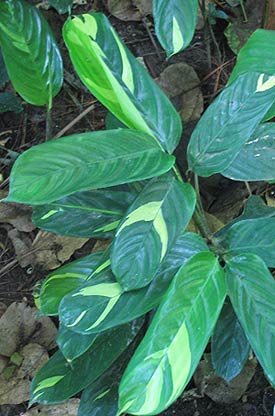 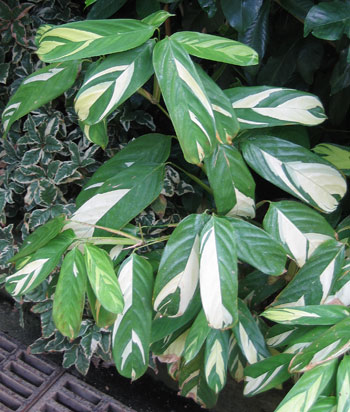 Never-Never
Plant Stromanthe sp. Never-Never
Plant Stromanthe sp.
These are striking foliage plants that actually also
flower making them doubly attractive. All told they'll grow
to be less than 2 feet tall.
Benefits:
From: Latin
America and perhaps Brazil
Photographed: On the right at the Winter Garden
in Auckland, New Zealand in 2013 and on the left at the Hotel
Atitlan on Lake Atitlan in Guatemala in 2010.
Planting and Care: These are shade plants
that do well in warm, moist or humid climates with a fair
amount of rainfall or watering. Along with those requirements,
give them a moderately rich composted soil and they'll be
very content.
Text & Photographs ©GreenGardeningCookingCuring.com
2013/2018
|
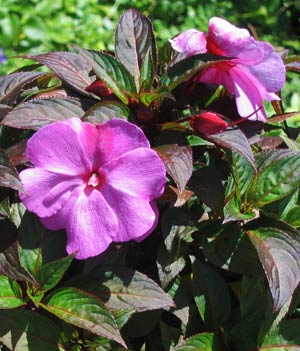 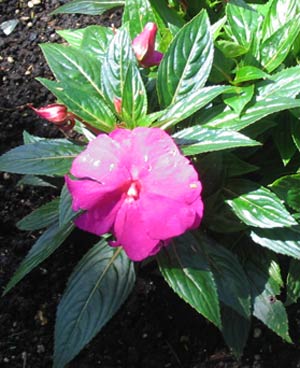 New
Guinea Impatiens Impatiens
hawkeri New
Guinea Impatiens Impatiens
hawkeri
I
think this is a great improvement on the old standby impatiens
plants. The leaves are colorful and the same small sized blossoms
come in more brilliant colors as well. If you have a shade garden,
I would very much recommend a few of these plants.
Benefits: In this family of plants, some have
been used in traditional medicines and one is used today as a Bach
Flower
Remedy, though it is not one of those pictured here.
From: As the name implies, this plant is native to Papua
New Guinea and the Solomon Islands
Photographed: At the Hotel San Buenaventura
on Lake Atitlan in Guatemala.
Planting and Care: Treat your impatiens
as annuals planting them in well-draining moist soil in shade
or even in deep shade. It is important that they receive regular
rainfall or watering to be at their best. Maybe the most demanding
feature of this plant is warmth. It will not handle frost or
cold weather.
Text & Photographs ©KO
2010 and GreenGardeningCookingCuring.com 2014/2018
To
see the less dramatic member of the family please
See
the "I" Page -- IMPATIENS |
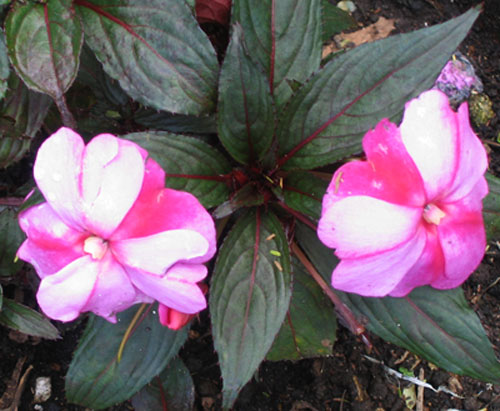 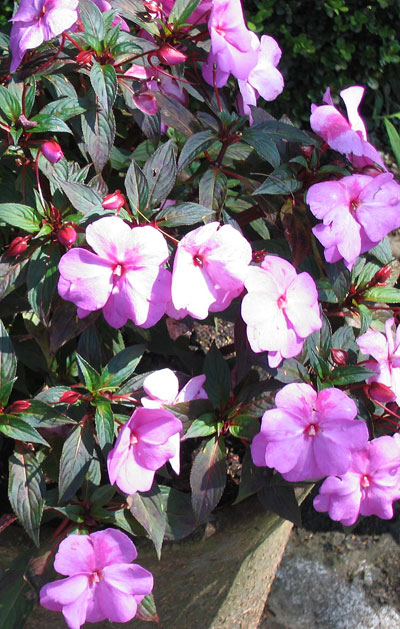 |
New
Guinea Trumpet Vine, Forest Bell Creeper Tecomanthe
dendrophila
Benefits: The flowers are extraordinary and maybe that's enough.
From: The tropical Pacific islands of New Guinea,
New Briton, and the Solomon's
Photographed: In
the Botanical Garden at the Hotel Atitlan on Lake Atitlan in Guatemala
in July
of 2010.
Planting and Care: Oddly, the New Guinea trumpet vine flowers
on old wood so take great care with any kind of pruning until you have experience
with this vine. This is a fast grower and loves to find support on a trellis
or something similar. As a tropical plant it does best in warm, moist fertile
soil in a semi shady situation or in one where it does not have to suffer mid-day
direct sun. Be sure it receives regular rainfall or watering.
Text and Photographs ©GreenGardeningCookingCuring.com
2015/2018
With
my appreciation, my #16 Vine mystery
was identified for me by 'Botanics Man' on Twitter. |
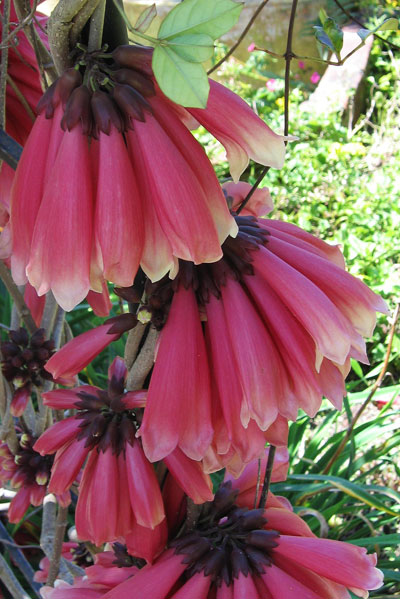 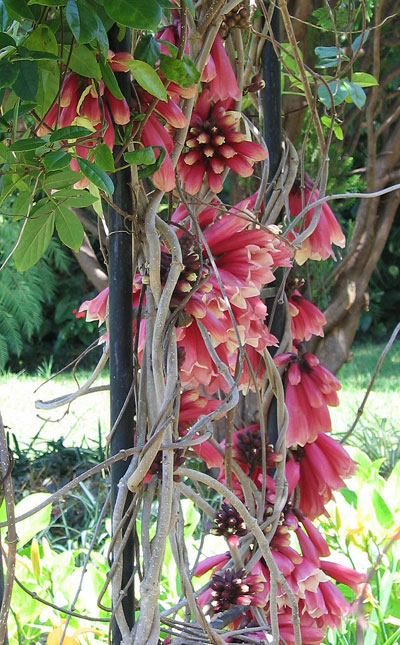 |
New
Zealand Flax, New Zealand Hemp Phormium tenax
and syn. Phormium colensoi
I think of this often coppery colored plant as a
type of wide bladed grass. It is very appealing even when
it is entirely green.
Benefits: Many years ago the Maori used
this plant in finely and beautifully woven textiles. The
leaves were also used in the production of baskets and
even fishing
nets. Not surprisingly, the Maori also found the
many medicinal benefits of New Zealand flax. Soon after
the arrival of the British the wonders of this plant material
became evident and the Maori were enslaved to produce it
great quantities for export.
From: New Zealand
Planting and Care: At
its best in your garden New Zealand flax will grow to be
4 feet or more in height. It is a perennial plant in warm
tropical regions, but you can enjoy it in colder places
if you shelter it for the winter season somewhere in your
home someplace close to a sunny window. New Zealand flax
likes to live in moist fertile well draining soil in full
sun though depending on your location it will appreciate
shade from the hot afternoon sun.
Text
and Photographs
©GreenGardeningCookingCuring.com 2012/2018
|
Photographed: In
the Botanical Garden in Naples, 2012
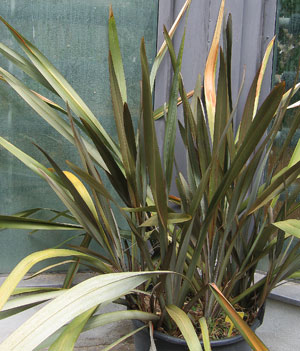 |
Photographed: In
the city gardens in Malaga, Spain, 2012.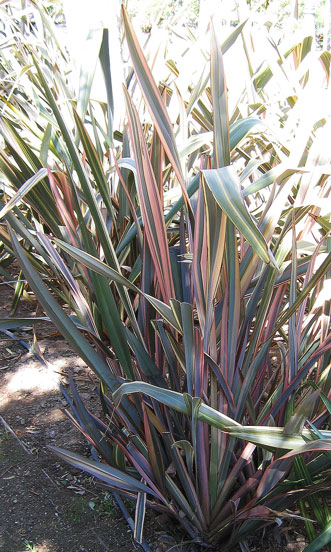
|
Photographed: At
the Hotel Atitlan on
Lake Atitlan in Guatemala in 2010. 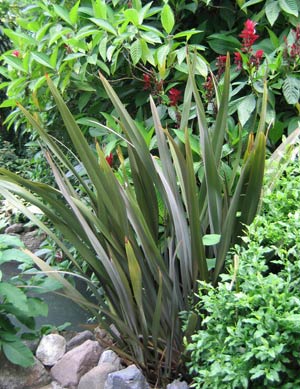
|
|
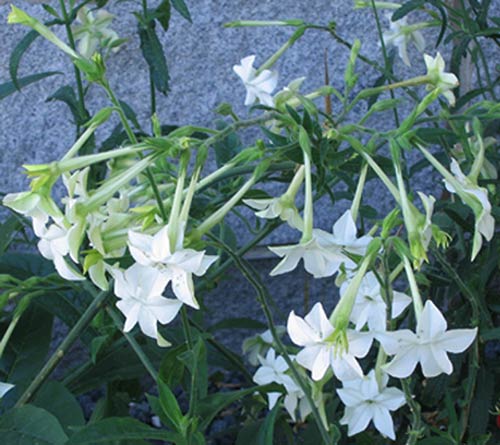 **Nicotiana,
Tobacco Plant Nicotiana alata **Nicotiana,
Tobacco Plant Nicotiana alata
Many years ago I grew these flowers in my New England summer garden.
The scent in the late afternoon was glorious. I found the lime colored variety
in the photograph below especially interesting for the color combinations
it
could
make
with other flowers in an informal summer garden.
Benefits:
From: The Americas, Australia, SW Africa and the South Pacific
Photographed: On the right in the Thuya Garden, Mt. Desert Island,
Maine,
2013.
Planting and Care: These are very easy to care for plants. Give
them warm summer sunshine and regular watering or rainfall and they will do just
fine.
They are annuals so in a cold climate you will have to plant them each year.
Text and Photographs ©GreenGardeningCookingCuring.com
2013/2018 |
Nicotiana
'Lime'
Photographed: In
the Blithewold Garden in Bristol, Rhode Island
2013.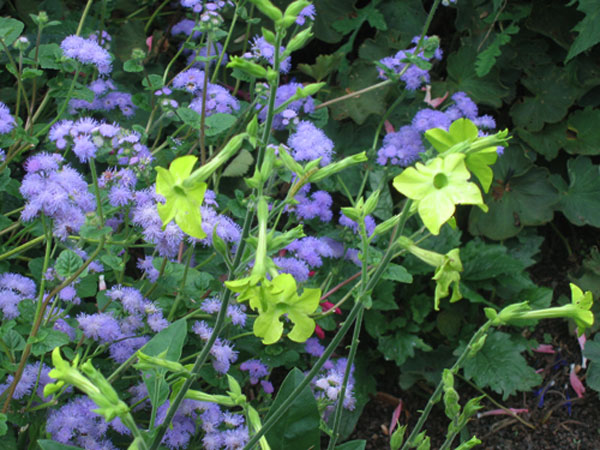
|
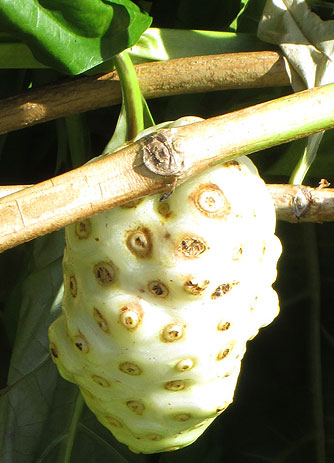 Noni,
Great Morinda, Beach Mulberry, Indian Mulberry Morinda
citrifolia L. Noni,
Great Morinda, Beach Mulberry, Indian Mulberry Morinda
citrifolia L.
These are beautiful green bushy plants and trees that to a novice tropical gardener
like
me seem
very desirable.
Benefits: The plant is attractive to both butterflies and hummingbirds.
And, if you find yourself on a deserted tropical island where there are fruit
on a noni, have one. They don't taste good, but beggars can't be choosers so
it is said. I've also heard that they have medicinal benefits which would be
apt since they are otherwise not eaten. For some of its potential health
benefits visit this website http://www.highbloodpressureinfo.org/noni-juice-and-blood-pressure.html
From: Southeastern Asia or maybe the Caribbean
or maybe Hawaii.
Photographed: In Crown Point, Tobago, in 2017.
Planting and Care: Plant
your noni in the sun or in a semi shady area where it will benefit from
local
rains,
even
though
it will handle a drought if it has no choice.
Text ©KO 2010 and photographs ©GreenGardeningCookingCuring.com
2018 |
|
| |
Nutmeg
Tree Myristica fragrans Houtt.
In a sunny, warm, humid place the nutmeg tree will grow to 70 or 80 feet. Its
leaves are similar to those on a coffee tree or gardenia–deep green and
shiny. Five to six months after flowering it bears a 2" fruit containing
the nutmeg seed. The seed is covered with a scarlet aril which when dried and
ground becomes mace. One hundred nutmegs will produce only 3 ounces of dried
mace. It has become an important export crop for the island of Grenada which
sends about 2000 tons of nutmeg to the US each year.
Benefits: It is said to have medicinal uses as well
as giving us its terrific spice. Imagine eggnog without it!
From: Opinions vary on its origin; some say it is native to the East
Indies while others believe that nutmeg arrived in the Caribbean in the early
19th century.
Text ©KO 2008 |
| |
© 2019 GreenGardeningCookingCuring.com. All rights reserved |

 New
Guinea Impatiens Impatiens
hawkeri
New
Guinea Impatiens Impatiens
hawkeri



 **Nicotiana,
Tobacco Plant Nicotiana alata
**Nicotiana,
Tobacco Plant Nicotiana alata Noni,
Great Morinda, Beach Mulberry, Indian Mulberry Morinda
citrifolia L.
Noni,
Great Morinda, Beach Mulberry, Indian Mulberry Morinda
citrifolia L.